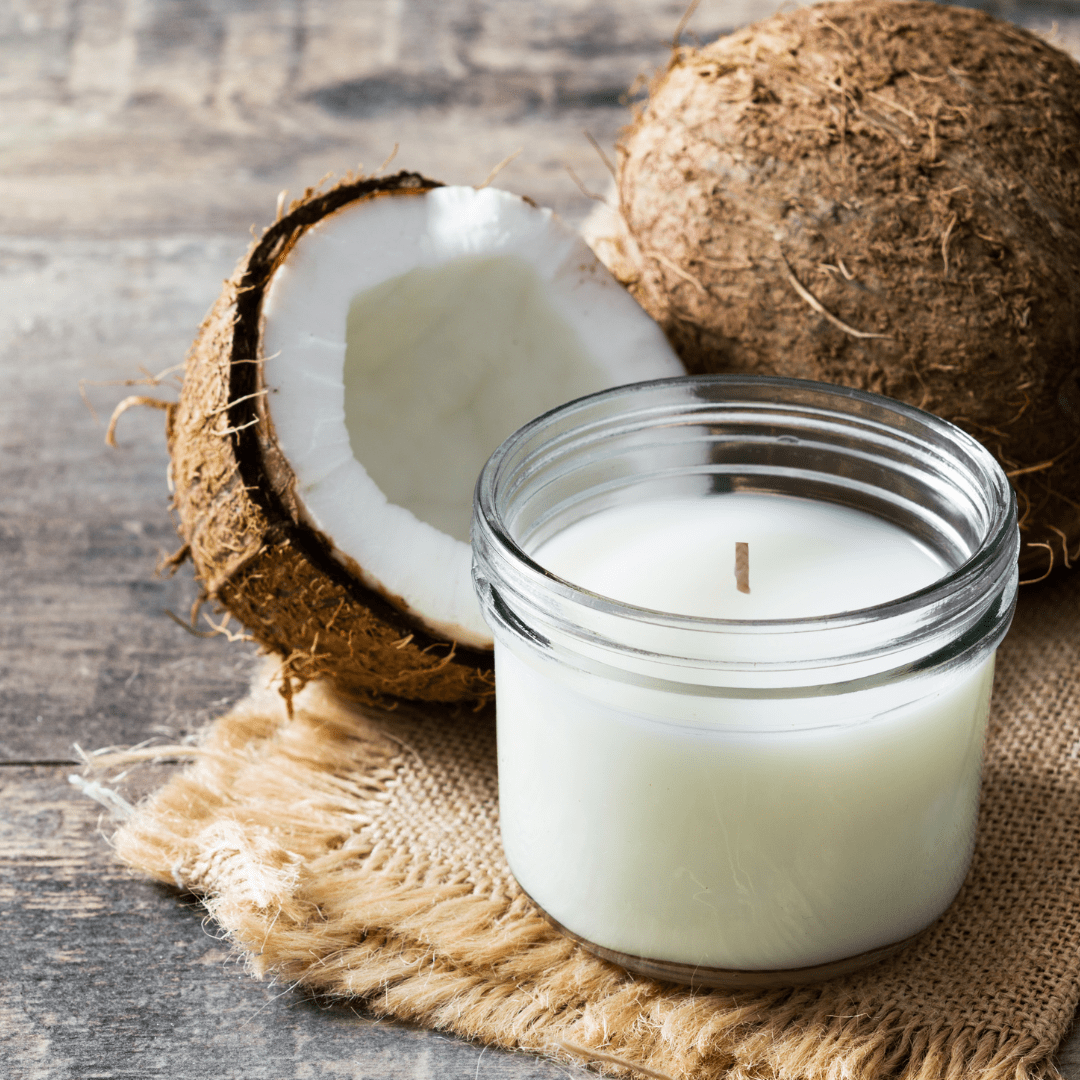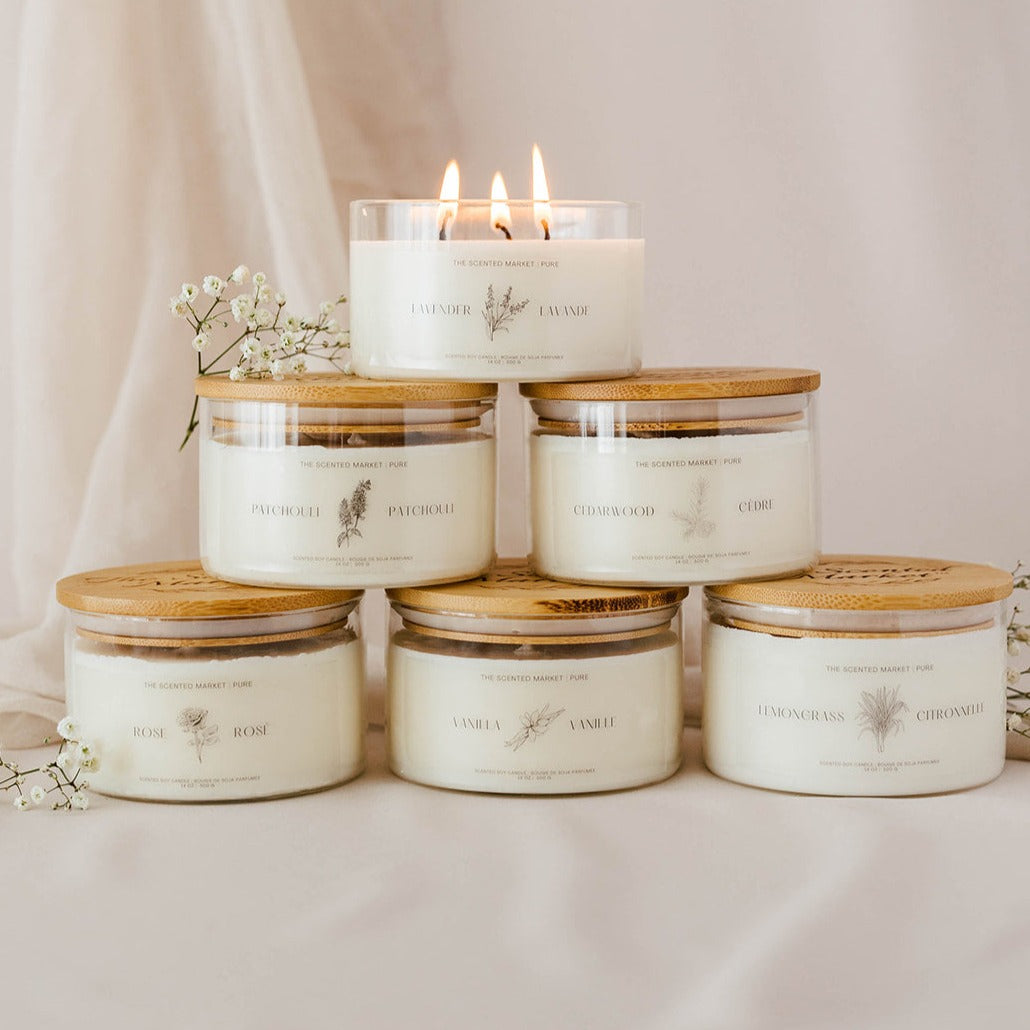Experience the Calmness of Crystal Soy Candles and Home Fragrance
Experience the Calmness of Crystal Soy Candles and Home Fragrance
Blog Article
From Wick to Wax: Recognizing the Chemistry Behind Soy Wax Candles and Their Environmental Influence
As we brighten our areas with the cozy glow of candle lights, there exists a realm of elaborate chemistry behind the relatively straightforward act of lighting a soy wax candle. Join us as we unravel the scientific intricacies behind soy wax candles and explore their effects on our environment.
Soy Wax Vs. Paraffin Wax
When comparing soy wax and paraffin wax for candle production, it is vital to comprehend the distinct characteristics and benefits of each material. Soy wax is a natural, renewable energy originated from soybean oil, making it environmentally friendly and eco-friendly - candles. On the other hand, paraffin wax is a byproduct of oil refining, which elevates issues regarding its ecological influence and sustainability
Soy wax candles burn cleaner and discharge much less soot compared to paraffin wax candle lights, making them a much healthier choice for interior air high quality. Additionally, soy wax has a lower melting point, enabling a longer-lasting candle that disperses fragrance much more efficiently. Paraffin wax, on the other hand, often tends to melt faster and less easily, potentially releasing harmful chemicals right into the air.
From a sustainability viewpoint, soy wax is preferred for its biodegradability and eco-friendly sourcing, aligning with the growing customer choice for ecologically aware items. While paraffin wax has been a conventional choice in candle light making because of its affordability and convenience of usage, the shift in the direction of green alternatives like soy wax is gaining energy in the industry.
Chemical Make-up of Soy Wax

Burning Refine in Soy Candles
The chemical structure of soy wax directly influences the burning procedure in soy candle lights, affecting factors such as melt time, fragrance release, and environmental impact. When a soy candle light is lit, the warm from the fire thaws the wax near the wick. This fluid wax is then created the wick due to capillary activity. As the fluid wax reaches the fire, it goes through and evaporates burning. The combustion procedure includes the vaporized hydrocarbons in the wax reacting with oxygen in the air to create warm, light, water vapor, and carbon dioxide.
The combustion effectiveness of soy candles is affected by the purity of the soy wax and the high quality of the wick. Furthermore, soy wax candle lights have a reduced ecological influence compared to paraffin candles due to their renewable and eco-friendly nature.

Ecological Benefits of Soy Wax

Considered a sustainable option to traditional paraffin wax, soy wax offers noteworthy environmental advantages that make it a popular choice amongst eco-conscious consumers. Soy wax burns cleaner and creates much less residue than paraffin wax, adding to much better interior air high quality and lowering the requirement for cleaning and upkeep. Overall, the environmental benefits of soy wax straighten with the growing demand for sustainable and environment-friendly products in the market.
Recycling and Disposal Factors To Consider
Reusing and appropriate disposal of soy wax candle lights play a vital role in keeping environmental sustainability and minimizing waste in communities and families. The first step is to make sure that the candle light article has melted completely when it comes to recycling soy wax candles. This can be accomplished by allowing the candle view publisher site to burn until the wick is no more useful, and after that letting the remaining wax cool and strengthen. As soon as the wax has actually strengthened, it can be very carefully gotten rid of from the container.

In terms of disposal, if recycling is not an alternative, soy wax candle lights are eco-friendly and can be securely disposed of in most house waste systems. It is always advised to inspect with neighborhood reusing centers or waste monitoring services for details guidelines on candle disposal to make sure correct handling and ecological protection.
Final Thought
In verdict, the chemistry behind soy wax candles exposes their ecological advantages over paraffin wax candle lights. Soy wax, derived from soybean oil, burns cleaner and creates much less residue when compared to paraffin wax.
When comparing soy wax and paraffin wax for candle light production, it is necessary to recognize the distinct attributes and advantages of each material (crystal soy candles).Soy wax candle lights burn cleaner and discharge much less soot compared to paraffin wax candles, making them a healthier option for interior air top quality.Considered a sustainable option to helpful resources typical paraffin wax, soy wax offers noteworthy environmental advantages that make it a preferred selection among eco-conscious consumers. Soy wax burns cleaner and generates much less soot than paraffin wax, contributing to much better interior air top quality and reducing the demand for cleansing and upkeep.In conclusion, the chemistry behind soy wax candles reveals their ecological benefits over paraffin wax candle lights
Report this page